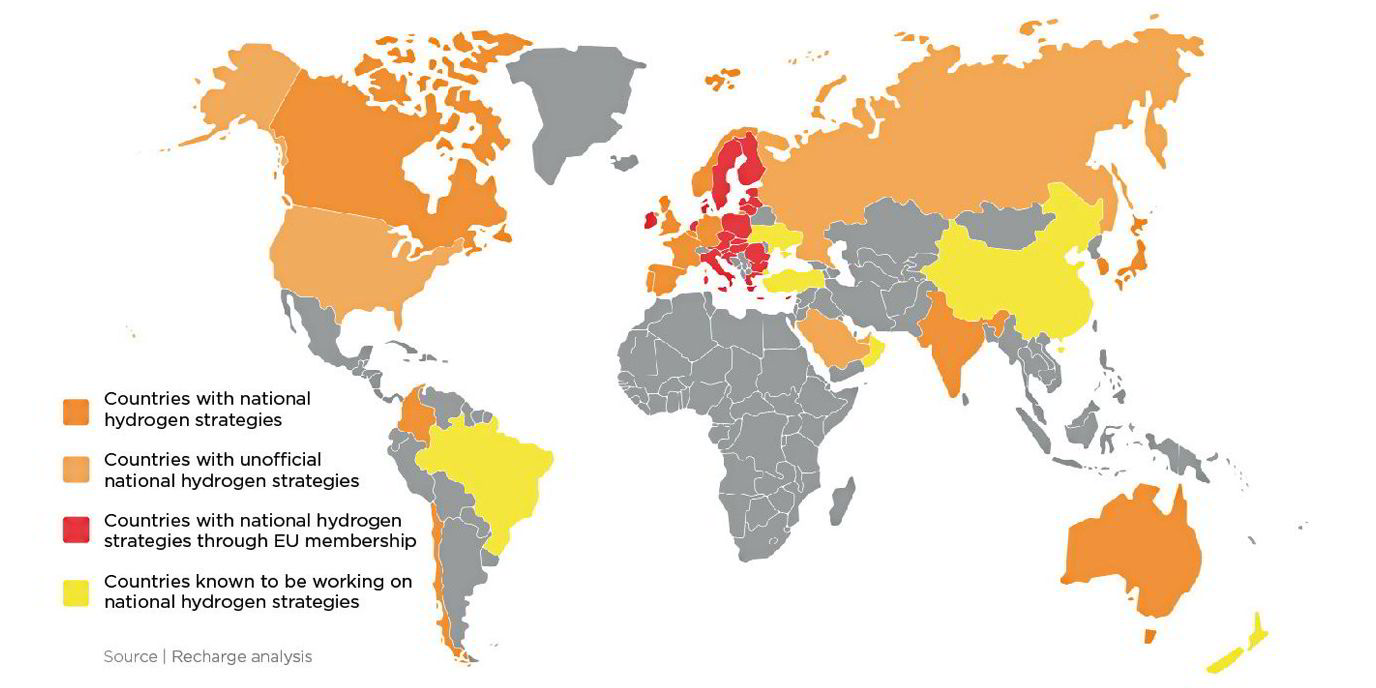The ramp up of clean hydrogen production to decarbonise the world’s heavy industry and aviation, shipping and long-haul trucking sectors, which together account for some 35% of global CO2 emissions, stands among the “greatest challenges” of the energy transition, believes Remi Eriksen, CEO of DNV.
According to the consultancy, which this week released its latest Energy Transition Outlook (ETO), global hydrogen production for use in the energy sector is “currently negligible” and will only start to scale from the late 2030s, meeting 5% of global energy demand by mid-century – a far cry from levels needed to help meet emissions reductions goals set by the Paris Agreement.
“Maybe we can get to 70% of global energy demand from electricity [from renewables], but the remaining [percentage] is to come from something else – 10% we believe will come from bio-energy, which leaves 20% to come from hydrogen and H2 products, such as ammonia and e-fuels,” Eriksen said, speaking to Recharge ahead of the launch of the ETO.
“This is where we are furthest behind – that remaining 20-30% - and that is why we need strong incentives in many forms, to develop the hydrogen economy.”
Hydrogen, DNV stresses in the ETO, is seen as “the main decarbonisation alternative” for the so-called ‘hard to abate’ sectors, with biofuels in a supporting role, mainly in aviation. But direct hydrogen use is often “not suitable”, and ships and aircraft require hydrogen derivatives and e-fuels such as ammonia and synthetic jet fuel.

While debate over the need to develop blue – gas-fired, with carbon capture – ahead of green – renewables-generated – hydrogen, Eriksen argues it is a case of “all hands on deck” if the sector is going to contribute meaningful to slowing climate-change accelerating emissions.
“We need [hydrogen to meet] 20% [of energy demand] and so we need both blue and green because can’t get a sufficient volume from either of these alone. And you need the CCS anyways, for other reasons than blue hydrogen. So I think it’s ‘all hands on deck’.”
Government incentives, “similar to those given to renewables [over the last 20 years]”, said the ETO authors, are “needed to stimulate technology development and accelerate uptake of hydrogen and e-fuels”.
From 2050, according to the ETO report calculations, “most” hydrogen will be generated from dedicated renewables-based electrolysers, with 18% of hydrogen grid-based and 43% coming from production capacity powered by PV (16%), onshore wind (16%) and fixed offshore wind (9%), while blue hydrogen will account for 18% of supply by this date.
“We believe green hydrogen from electrolysis will be the main long-term solution for decarbonising hard-to-abate sectors, including hydrogen as a basis for other e-fuels. The future production of hydrogen for energy purposes will be dominated by electrolysis using dedicated off-grid renewables, such as solar and wind farms,” said Eriksen.



